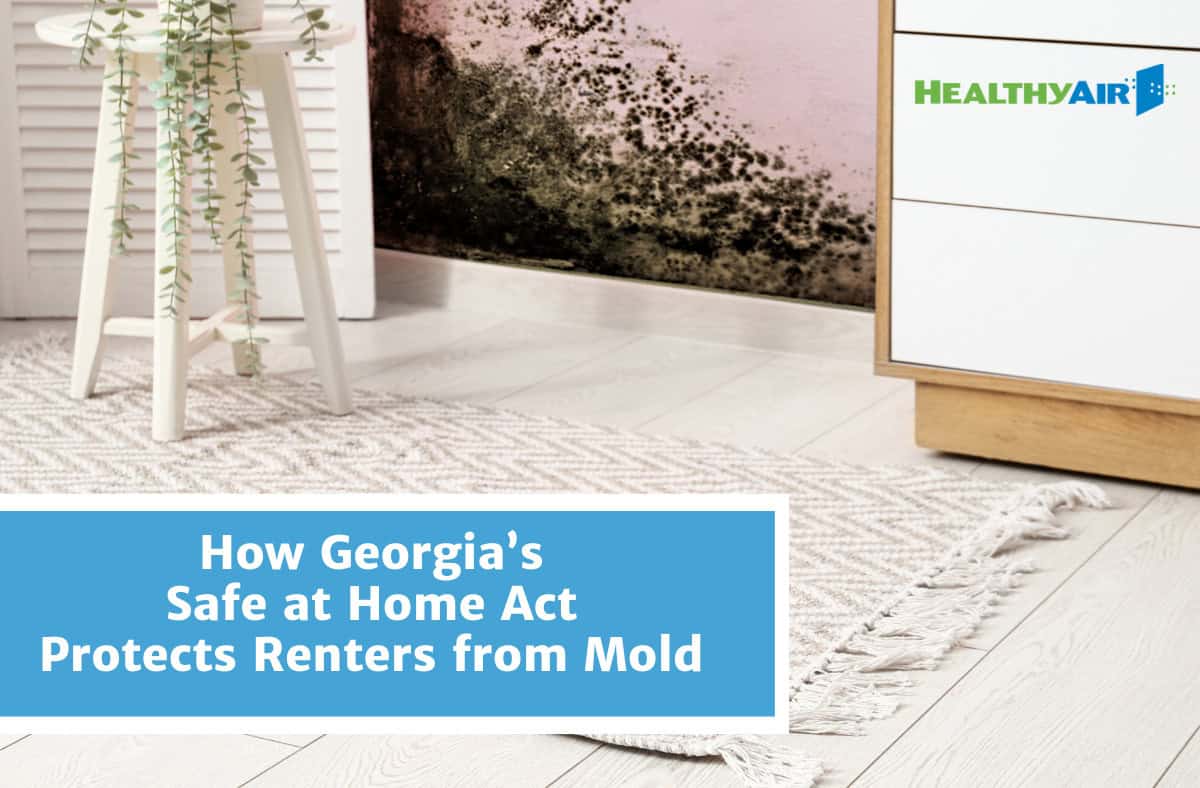Breathing Easy: How Indoor Air Quality and Mold Can Impact Your Health

As the air turns warmer, flowers and trees start to bloom as we welcome the first signs of spring. But if you’re someone who suffers from seasonal allergies, this time of year can make you feel miserable. Air quality has a tremendous impact on our health and wellbeing. But did you know that your indoor air quality can affect your health even more significantly than outside air – and the impact can happen any time of year?
According to the World Health Organization (WHO), exposure to household air pollution leads to several diseases, including stroke, ischemic heart disease, chronic obstructive pulmonary disease (COPD) and lung cancer. In fact, poor air quality in the home can lead to a wide range of health issues, with mold-related illness being one of the most common concerns. Exposure to mold can cause health issues such as:
Respiratory issues: Coughing, wheezing, shortness of breath, and worsening of asthma symptoms
Allergic reactions: Sneezing, runny nose, sinus congestion, itchy eyes and skin rashes
Overall body symptoms: Fatigue, headaches, body aches, dry eyes, difficulty concentrating, neurological symptoms, and more
In severe cases, prolonged exposure to mold can lead to more serious health problems, including respiratory infections and lung damage.
But isn’t there mold in the air outside too?
While there are pollutants in the outside air, the Environmental Protection Agency notes that indoor air can be two to five times more polluted than outdoor air, with sources including mold, pet dander, dust mites and chemicals from cleaning products and building materials. Mold, one of the most insidious sources, thrives in damp and humid environments. And in the South, we definitely feel humidity when the spring and summer months arrive. That humidity can be felt indoors as well.
When indoor humidity levels increase above a certain threshold, the possibility of mold growth in the home also increases, especially in areas such as bathrooms, basements and kitchens. And when mold spores become airborne, they can circulate throughout your HVAC system and your entire home, compromising your indoor air quality – and your health. Exposure to mold can be particularly troubling for people with allergies, asthma or weakened immune systems. And one in four people genetically are unable to clear mold mycotoxins from their bodies, causing them to become increasingly ill. Prolonged exposure to mold can weaken your immune system and make you more susceptible to developing infections.
How to improve your indoor air quality
Ensuring good indoor air quality is essential to better health and wellbeing. Here are a few things you can do to improve your indoor air and reduce your risk of mold-related illness:
- Keep your home clean. Regularly clean and vacuum your home to remove dust, pet dander, pollen and allergens. Wipe surfaces with a slightly damp cloth rather than dry dusting, to ensure that you are removing dust and allergens rather than just moving them around. Make sure your vacuum has a HEPA filter.
- Let the fresh air in – but only when outside mold levels are low. Letting fresh air into your home is great for improving your air quality. But it’s important to watch local air quality monitors for information on pollen and mold spore levels. When mold spores are high outside, it’s best to keep your windows closed and not invite them into your home.
- Use your nose. If you encounter a damp, musty smell anywhere in your home, have your air quality checked for mold and other air contaminants.
- Address mold and moisture problems quickly. Mold spores can begin growing very quickly on a wet surface – within 48 to 72 hours. If you find a leak in your home, contact a reputable professional right away to get the problem corrected and to remove any wet materials that could lead to mold growth.
- Control indoor humidity levels. Use dehumidifiers to keep your indoor humidity levels at less than 55 percent. In addition to room-sized dehumidifiers, whole house dehumidifiers are available and can be added to your HVAC system, ensuring humidity levels throughout the home are kept at a safe level.
- Consider adding a whole-house airborne purifier to your HVAC system. These systems can include a combination of air filtration, cold-plasma ion generators, air duct sealing, fresh air ventilation and fungal cleaning.
The air we breathe is as important to our health and wellbeing as good nutrition and exercise. Your indoor air quality is too important to take lightly. Understanding how to improve your indoor air quality and keep your home free of mold and other airborne contaminants is key to staying well. If you or a family member are feeling unwell and you suspect you may have mold in your home or living space, it’s a good idea to call a qualified air quality and mold remediation company like Healthy Air USA to ensure the air you breathe is healthy and safe.
Sources:
https://www.who.int/news-room/fact-sheets/detail/ambient-(outdoor)-air-quality-and-health
https://www.epa.gov/report-environment/indoor-air-quality
https://www.forbes.com/home-improvement/cleaning-organization/reduce-dust-in-home/
https://www.survivingmold.com/resources-for-patients/mold-symptoms



